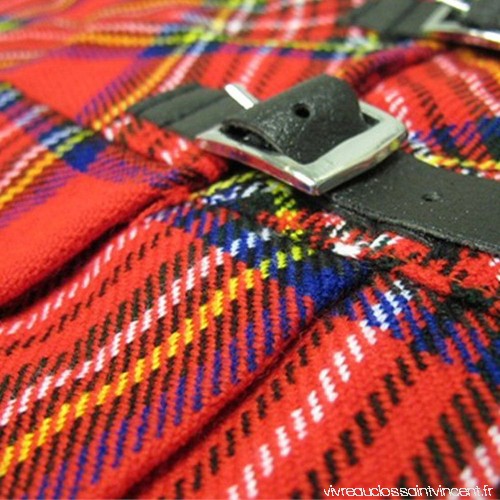Article: All about tartan

All about tartan
Tartan, which has since become the emblem of the Highlands thanks to the Kilt, has a century-old history whose legends and symbols are still used today. The greatest fashion designers reinvent it, thanks to its classic or rebellious style, as well as its nostalgic timelessness.
The famous "Sett" grid patterns created by the clever interweaving of dyed threads are no longer presented. We cannot help but draw a parallel with the smock, another great classic of Kidiwi's fashion and spearhead of her know-how.
The tartan offers an infinite number of possibilities, creations and patterns; the best-known being:
- The Classic: as green and blue checkerboard with a red stripe.
- The Blackwatch: in green and blue on a black background, often worn under a white collar for a subtle trendy reminder.
- Or the Royal Stewart: red, green and blue with a hint of white and yellow.

The very first trace of Tartan dates far back to ancient China, where we could see the fabric dressing the headdresses of the Jade statues.
The fabric was however made famous by Scotland, by giving it a leading role in her feudal political life.
The fabric thus became a real substitute for the heraldic art, showcasing through its colors the family or the clan to which its bearer belongs and its rank herein through the number of colors it has.
One color for the servants, two for the peasants and farmers, three for the officers, five for the chiefs, six for the druids and poets and of course seven for the kings.
This identification virtue will then be taken up in the educational milieu wherein the different colors of the tartan uniforms tells on which school the student putting on the uniform belongs.
This is one of the reasons why this stuff is largely represented in Kidiwi's Autumn-Winter collections. In many countries, these tartans attire that schoolchildren wears in September, is a must-have for the "Back to school".

Forbidden in 1746 during a war, it was King George IV who reintroduce it during a visit to Edinburgh, giving a royal dimension to his fabric that were already imbued with nobility and a symbol of exclusivity.
Following the Second World War, after it had been used by the major fashion houses, the tartan was liberalized and modernized by being worn by stars.
We think in particular of Vivienne Westwood’s wedding dress, as well as the Burberry house which used it as their ensign.
In the 70s and 80s, however, the tartan fabric left the royal courts, the red carpets and the catwalk to resume its William Wallace revolting tunes, when the Punk then Grunge movements used it as symbol for protest and anti-conformism.
If the Kilt is today a garment worn on traditional events, tartan continues to be worn on all occasions.
Tartan will not only bring out the stylishness and timeless classic distinction to our little ones, but will also recall the recklessness, the tender insolence and the need of independence which every child showcase.
Aware of the numerous similarities between Kidiwi and its legendary fabric, we constantly strive, through our collections, to revisit it, with the continuous quest to highlight its history and its values.



Leave a comment
This site is protected by hCaptcha and the hCaptcha Privacy Policy and Terms of Service apply.